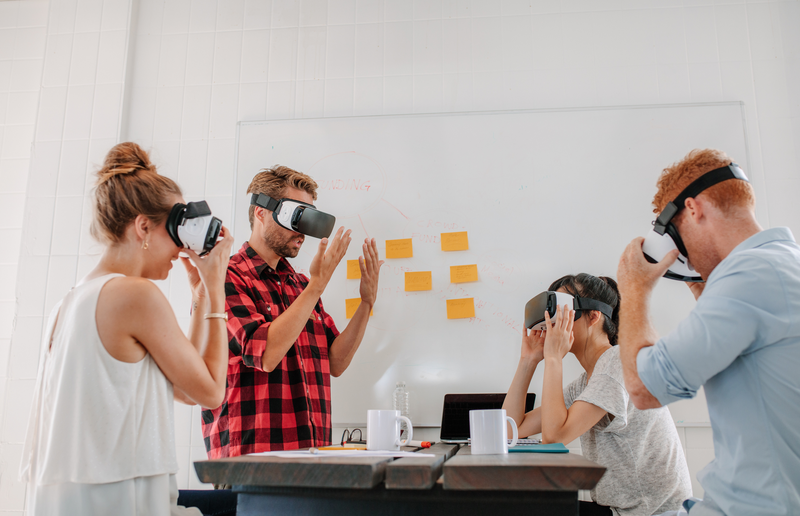ATD Blog
Virtual Reality: A Safe Place to Learn
Mon Nov 05 2018

In a very short time, the use of immersive technologies like virtual reality (VR) for learning has grown by leaps and bounds. Although immersive training may seem like a big departure from traditional learning due to the technology involved, there are more similarities than one might think. It’s not very different; it’s just a more effective way to learn.
No two jobs are the same, just like no two learners are the same. Here are a few recent business challenges where VR training offers a groundbreaking solution.
Customer Service
The gap between the training classroom and the actual job is extremely wide. On the call center floor, the distance is compounded when reps are servicing customers who have recently undergone some sort of hardship. Immersive training enables frontline employees to experience and navigate tough interactions in a consequence-free environment.
These interactions are not easy; but the increased repetition that VR allows will help learners build confidence, and that will help them perform better when they are faced with a unique situation during a live call. What’s more, the VR solution can track and analyze a user’s decisions in order to paint a highly analytical picture of how they navigate specific situations—something nearly impossible with traditional training methods.
By stepping into the world of the customer, learners experience the impact of their decisions through the customer. With VR, learners see, hear, and feel the effect of their actions, leading to more empathetic and thoughtful employees—and better customer service.
On the job, failure to understand a customer’s needs or empathize with their situation can negatively impact the customer’s overall perception of the company, not to mention their daily life. But we have found that reps who train using a VR platform have had as much as a 25 percent increase in their satisfaction scores from post-call customer surveys. This suggests that the opportunity to build empathy through VR has a significant positive impact on customer service rep performance.
Manufacturing
Process-focused core competencies—where someone has to perform intricate tasks in a chaotic and potentially dangerous environment—are prime opportunities to showcase VR training. The stakes are high, the margin for error is slim, and there isn’t a great method to train other than being on the job. It’s no surprise then that manufacturing or assembly line training was one of the first industries to embrace VR.
Over the past two years, STRIVR has been focused on building and implementing immersive training solutions. Its strategy in developing VR training for these situations is to create an authentic learning experience with context. In other words, the learner is prompted with stimuli to perform their job with all the stressors and chaos they will experience on the job, but in a consequence-free environment.
The additional repetitions are invaluable, but more importantly, through adaptive training, the VR simulation can identify learning gaps and home in on exactly when, where, and why mistakes are being made. Traditionally, identifying these gaps has been guesswork and reliant on observation. But VR software enables managers to pinpoint the root of most learning problems.
Aside from being a more engaging and fun learning experience, learners are participating in a training solution aimed at improving their safety and well-being. Often, learners never get to practice (or have repeated practice) in the real work environment. VR allows workers to repeatedly train in the exact environment they will be working in, without risk of injury.
The ability for workers to engage in experiential learning is key. Customers using the STRIVR platform have found that employees are actually 20 percent less likely to detect mistakes and hazards on the manufacturing floor when in an immersive VR environment than with paper-and-pen questions. To put it another way, the immersive, realistic environment of VR helps reveal that employees don’t actually know as much as their paper exams indicate. This insight helps training developers better understand who is actually ready to work on the floor, diminishing the likelihood of a crucial error.
These are just two examples of countless use cases for immersive VR training, all of which map to the goal of transforming how organizations train and people learn. As with any transformational tool, an investment is required. But we’ve seen that commitment pays big dividends for our customers because our partnerships are highly collaborative.
Want to take a deeper dive into the possibilities of VR training? Join us February 6-8, 2019, in West Palm Beach, Florida, for the 2019 ATD TechKnowledge Conference.
You've Reached ATD Member-only Content
Become an ATD member to continue
Already a member?Sign In
